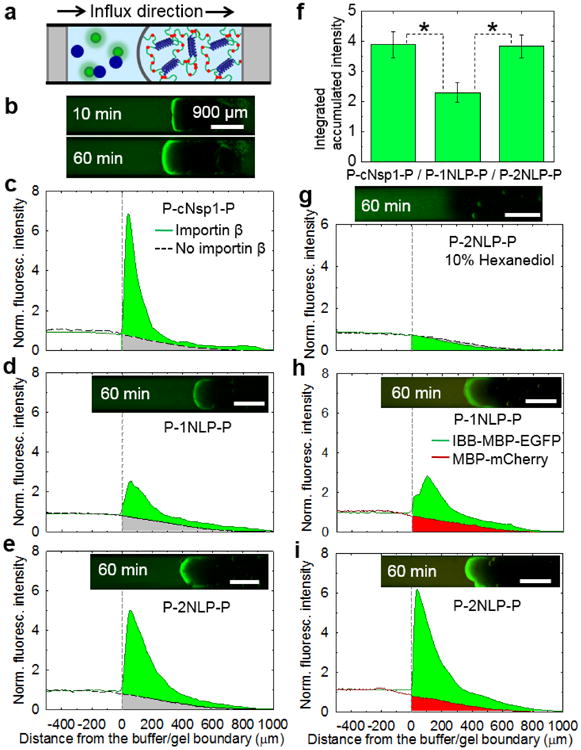Figure 4.

Artificially engineered protein hydrogels can mimic the enhanced selective transport of natural Nsp1. a) A schematic of capillary transport assay set-up. Blue and green circles are representing importin β and IBB-MBP-EGFP, respectively. All tests were measured with 5 μM IBB-MBP-EGFP in the presence or absence of 5 μM importin β. b) A time course transport measurement of 20 w/v% P-cNsp1-P hydrogel with importin β. c)-e) 20 w/v% hydrogels in the presence (solid line) or absence (dotted line) of importin β. f) P-cNsp1-P, P-1NLP-P and P-2NLP-P hydrogels absorbed 3.9±0.4 (mean±S.D., n = 3), 2.3±0.1 (n = 3) and 3.8±0.3 (n = 6) times more cargo-importin β complexes than inert molecules in an hour (Figure S10). * denotes p < 0.05. g) Fluorescence intensity measurements on P-2NLP-P (P-cNsp1-P in Figure S13) hydrogels (20 w/v%) with 10% 1,6 hexanediol show that FG interactions are critical for transport. h)-i). Selective permeability test performed on P-1NLP-P and P-2NLP-P biosynthetic hydrogels (20 w/v%) with the addition of 5 μM MBP-mCherry, a model inert molecule, into 5 μM IBB-MBP-EGFP/ importin β cargo complex mixtures. Over an hour, the cargo-carrier complexes accumulate 3.0 and 5.3 times more than MBP-mCherry (without the IBB domain) in P-1NLP-P and P-2NLP-P hydrogels, respectively. Time lapse measurement of P-2NLP-P gel is included in Figure S14. All scale bars are 900 μm.
